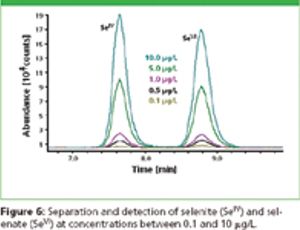
Did you know that applying the second derivative as a pretreatment to your near-infrared spectral data can help resolve overlapped peaks?

Did you know that applying the second derivative as a pretreatment to your near-infrared spectral data can help resolve overlapped peaks?

Generally speaking, chromate - Cr(VI) - is classified as allergenic, carcinogenic, and extremely toxic and is subject to strict monitoring. Cr(VI) can occur in various concentrations in different areas, for example, drinking water, toys, or textile and leather products. Metrohm has developed ion chromatographic determination methods for determining Cr(VI) in various concentration ranges (ng/L to mg/L) with inline sample preparation techniques for various matrices. The method can be almost entirely automated. In the following application note, we present the analysis of hexavalent chromium in toys, leather, and drinking water.

Generally speaking, chromate - Cr(VI) - is classified as allergenic, carcinogenic, and extremely toxic and is subject to strict monitoring. Cr(VI) can occur in various concentrations in different areas, for example, drinking water, toys, or textile and leather products. Metrohm has developed ion chromatographic determination methods for determining Cr(VI) in various concentration ranges (ng/L to mg/L) with inline sample preparation techniques for various matrices. The method can be almost entirely automated. In the following application note, we present the analysis of hexavalent chromium in toys, leather, and drinking water.

This article describes the use of combined ion chromatography-mass spectrometry (IC–MS) and ion chromatography-inductively coupled plasma mass spectrometry (IC-ICP–MS) to analyze potentially harmful compounds.

Published: August 1st 2021 | Updated:

Published: June 1st 2009 | Updated:

Published: July 1st 2015 | Updated:

Published: December 1st 2015 | Updated: